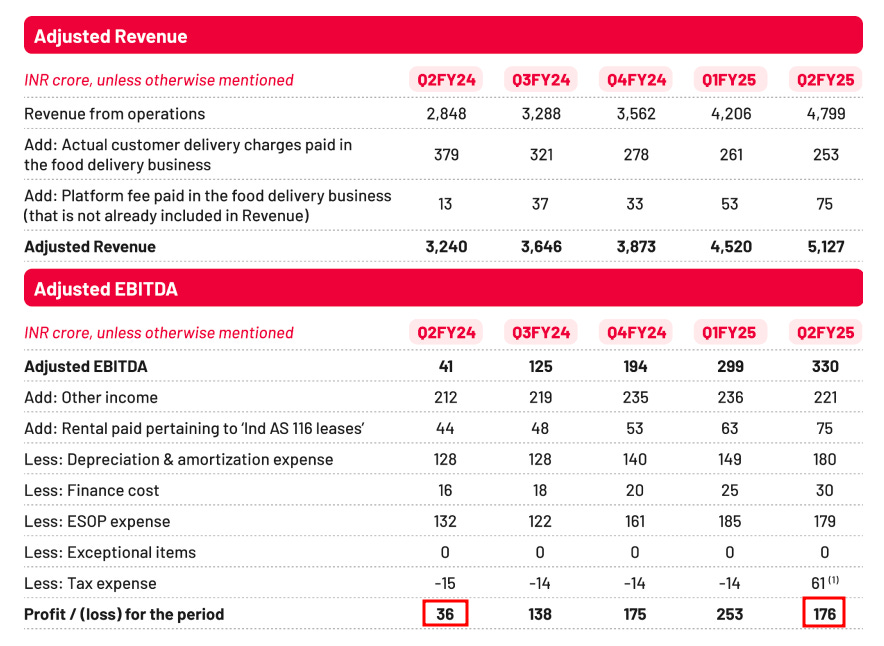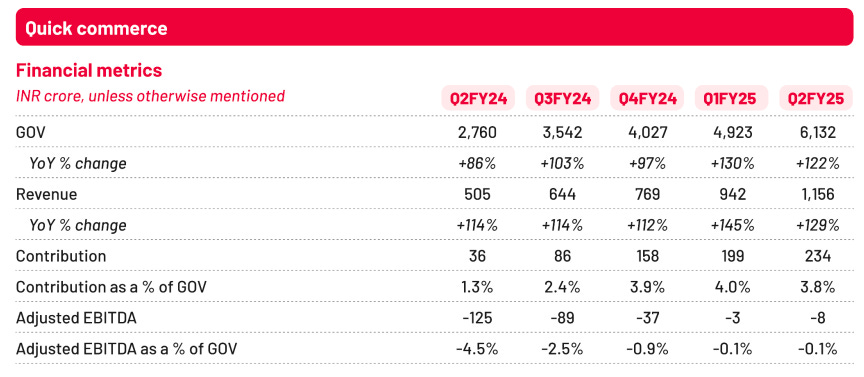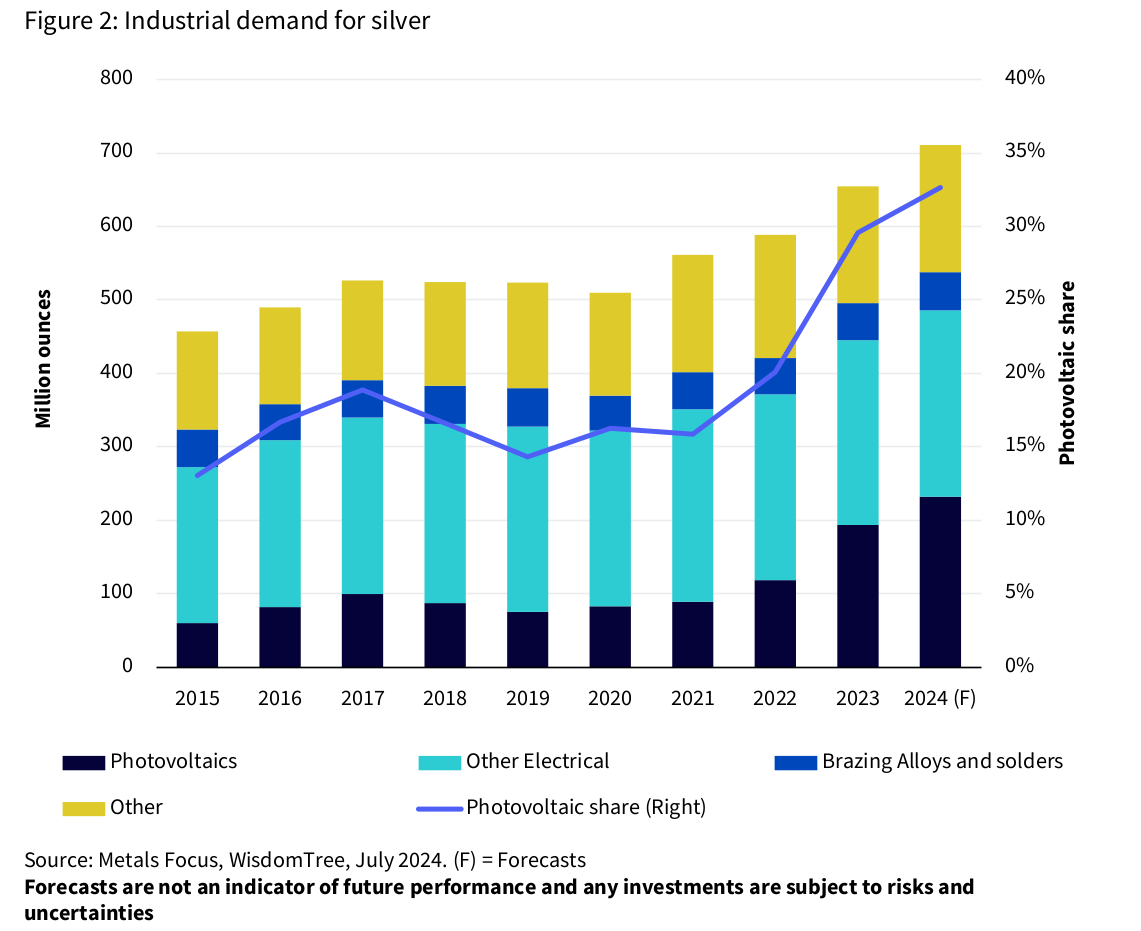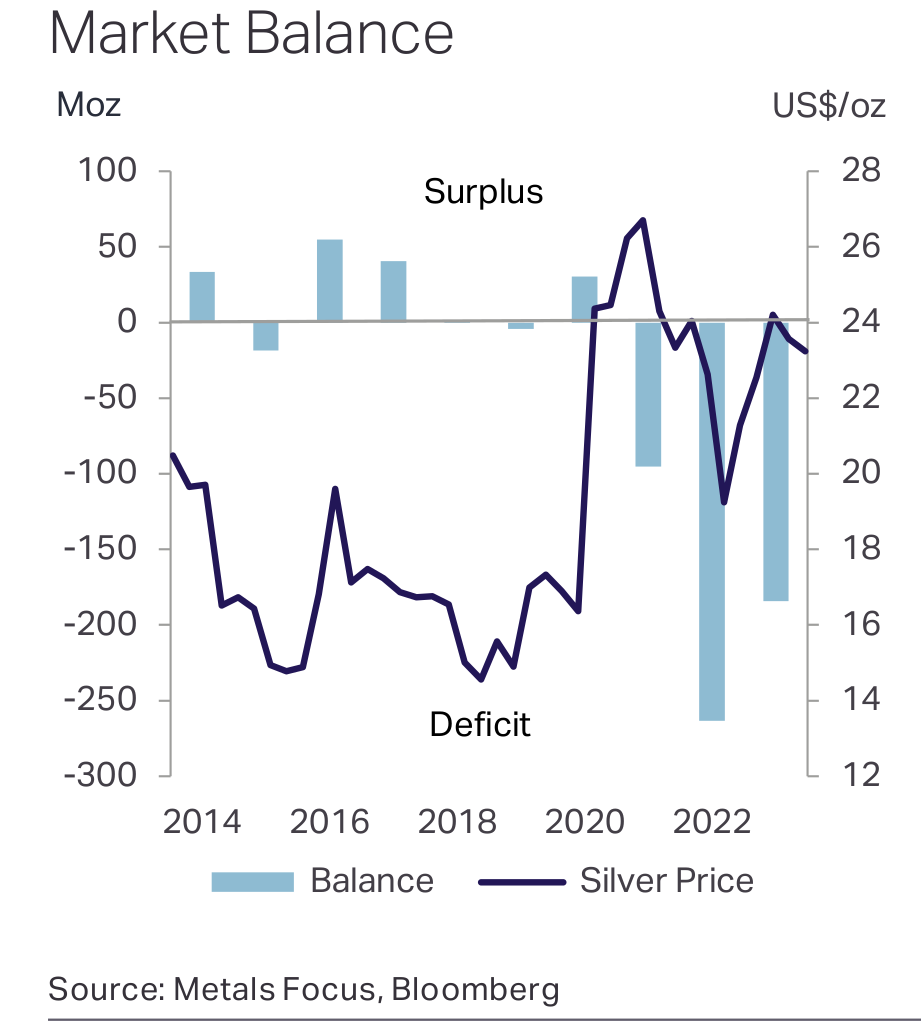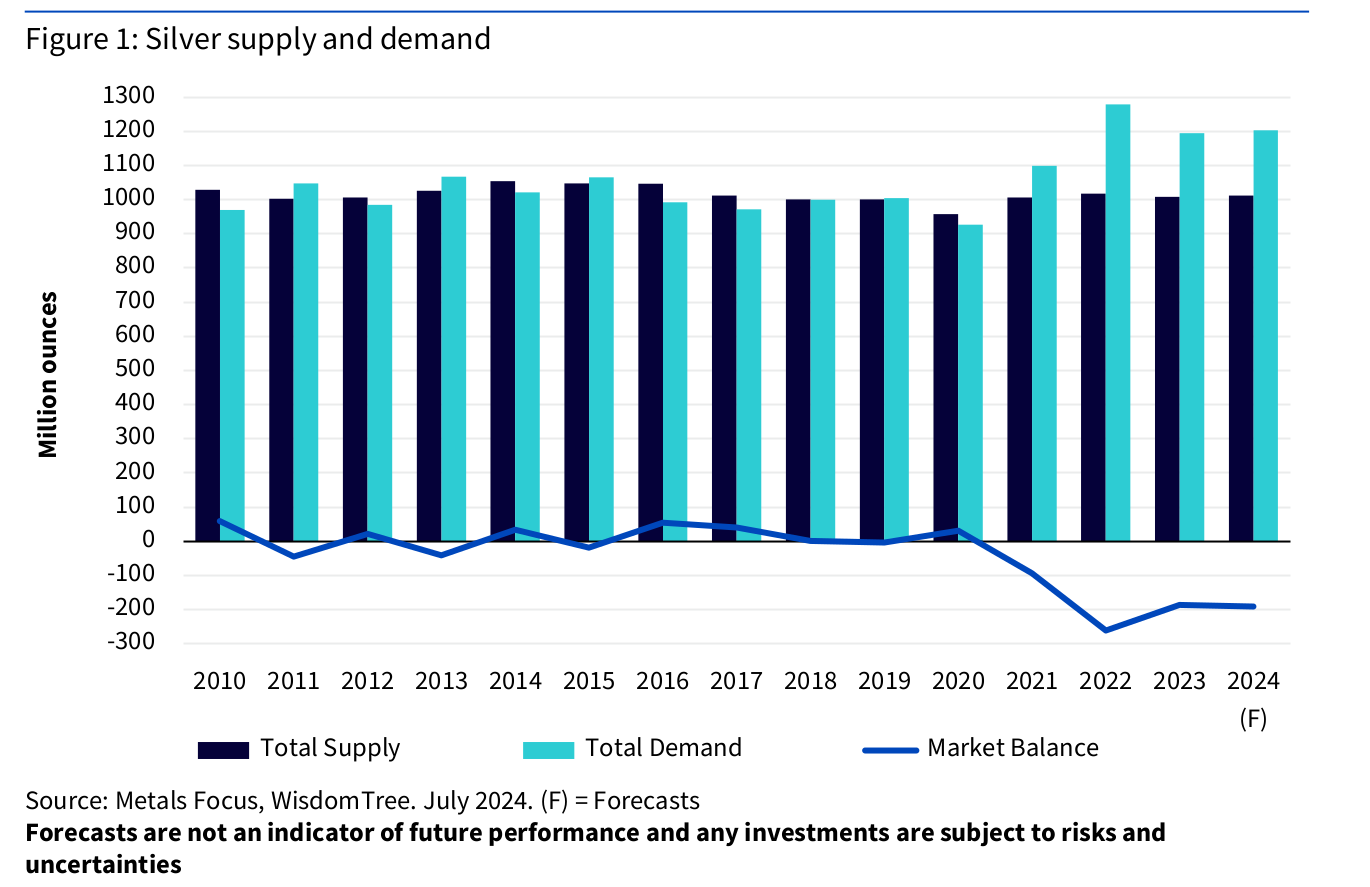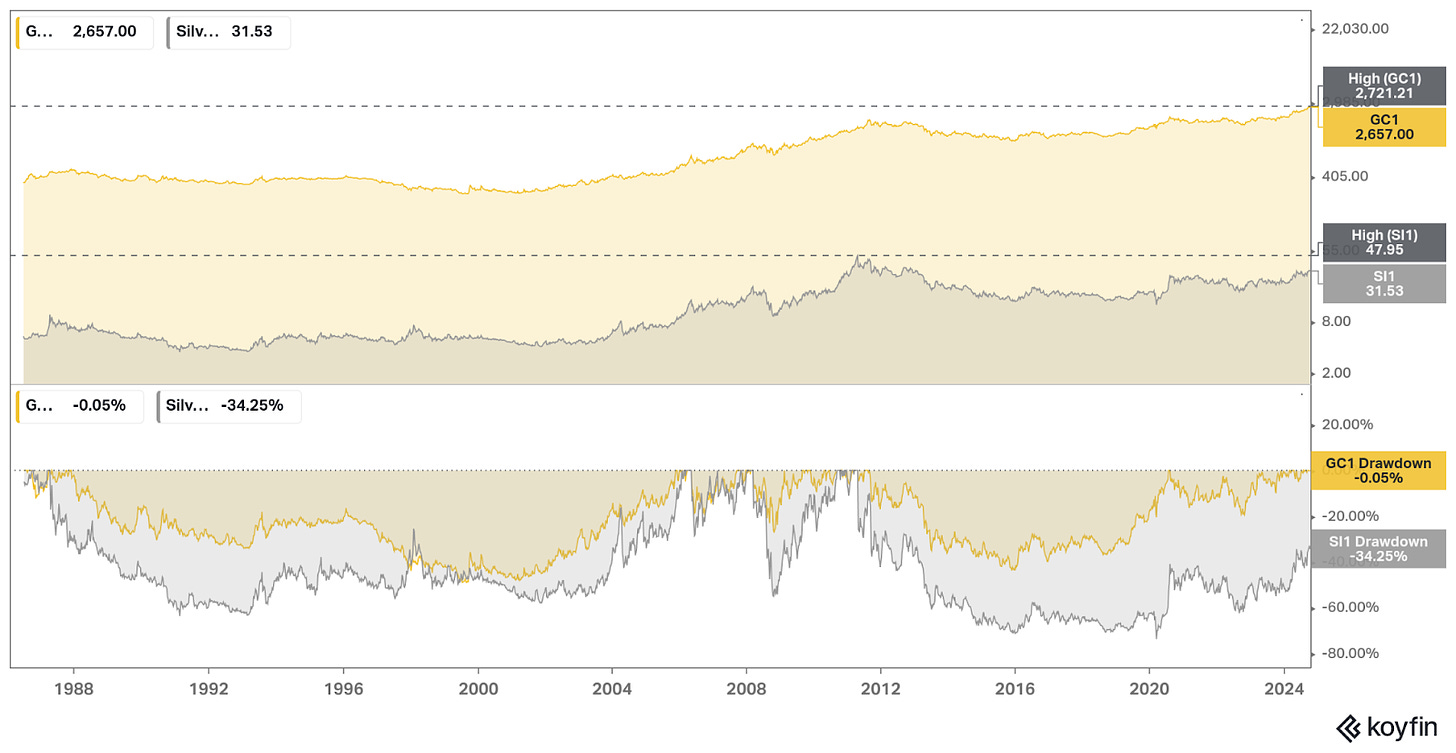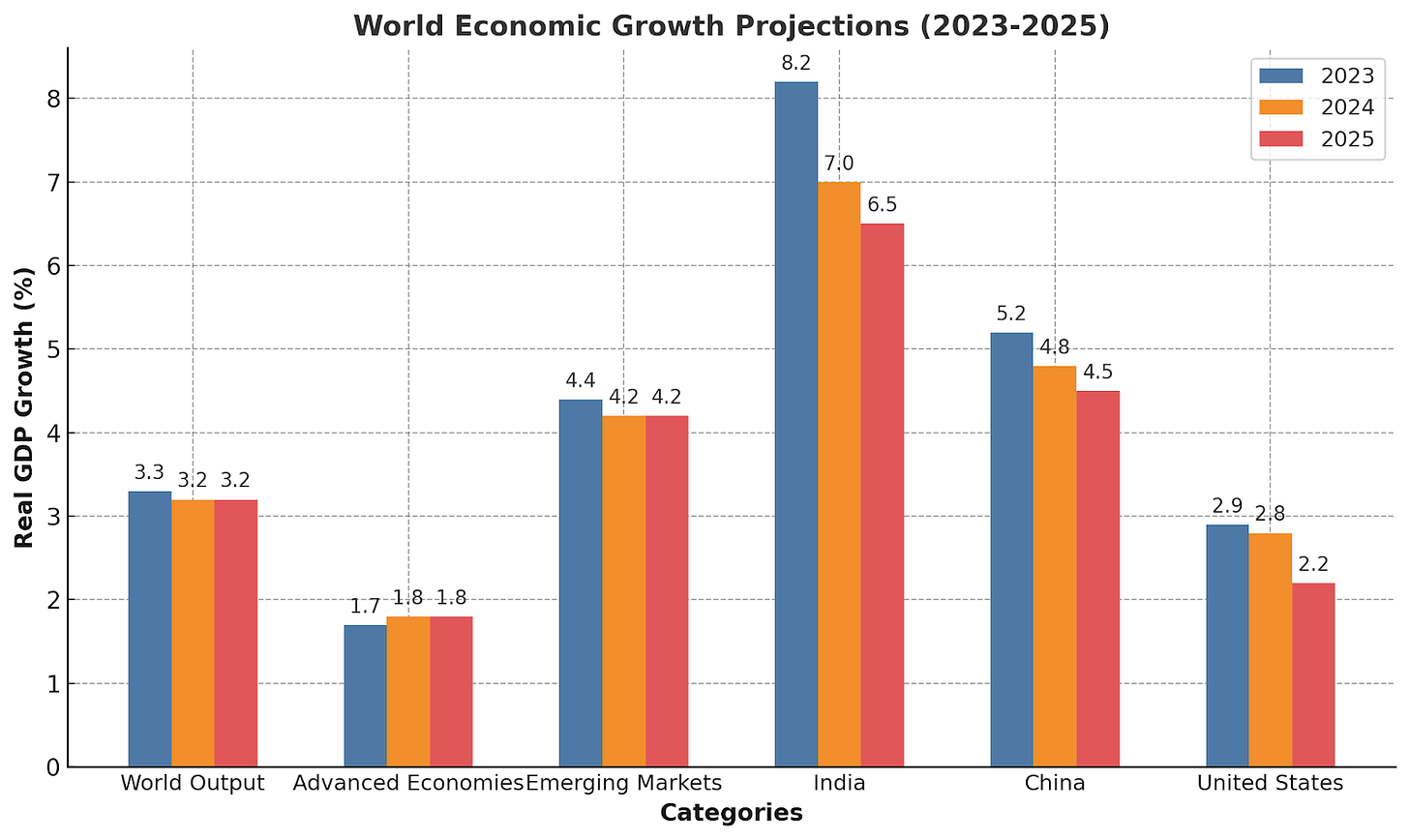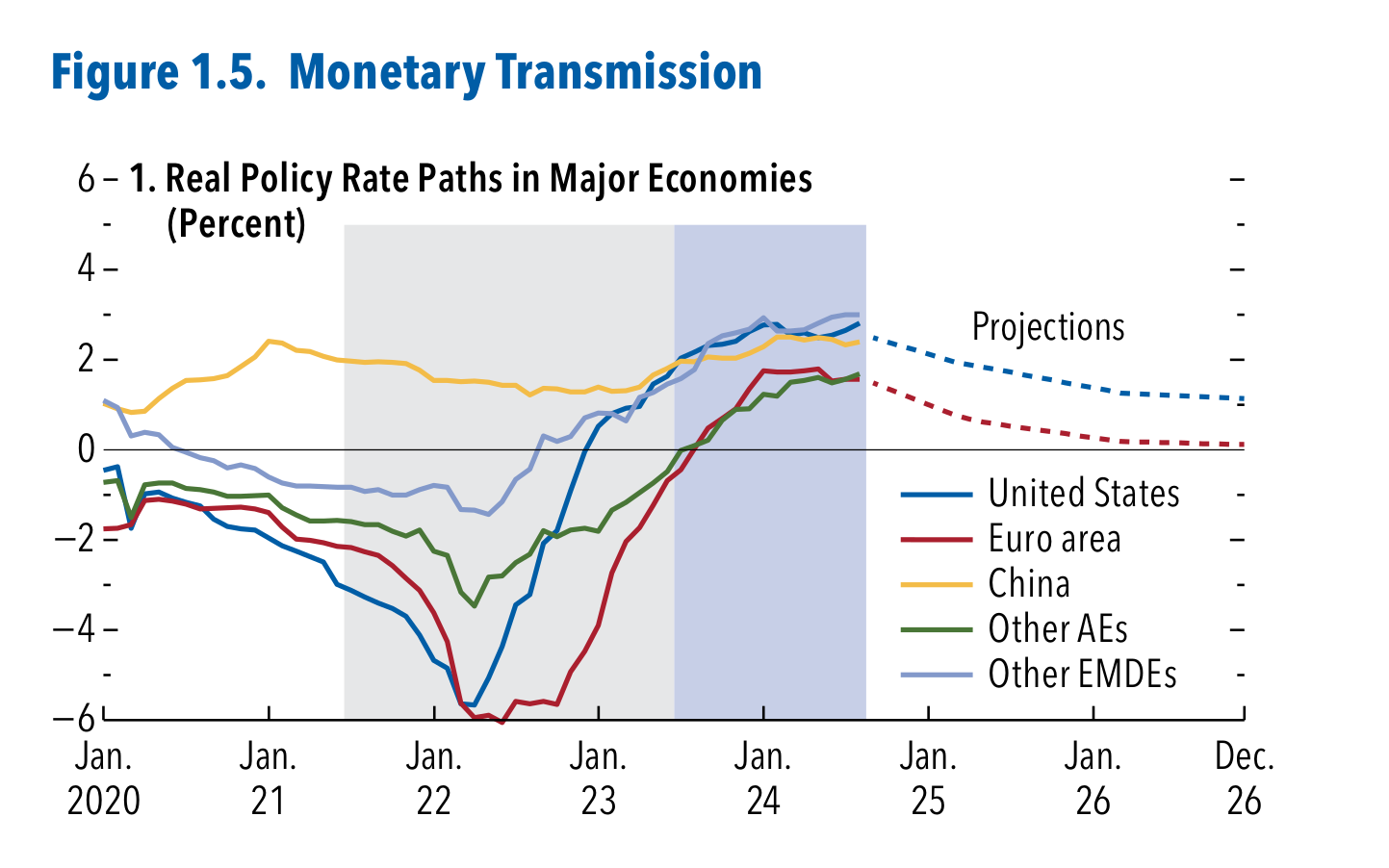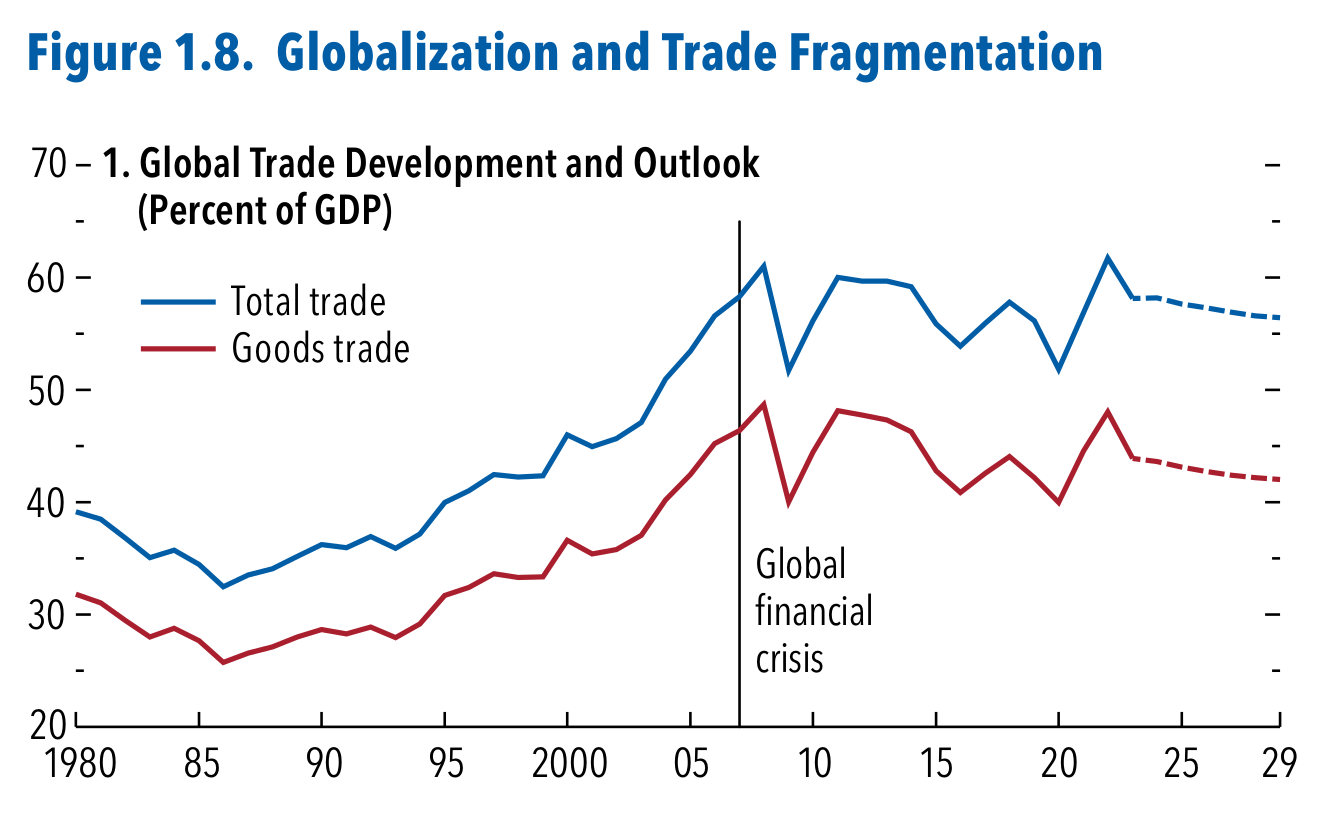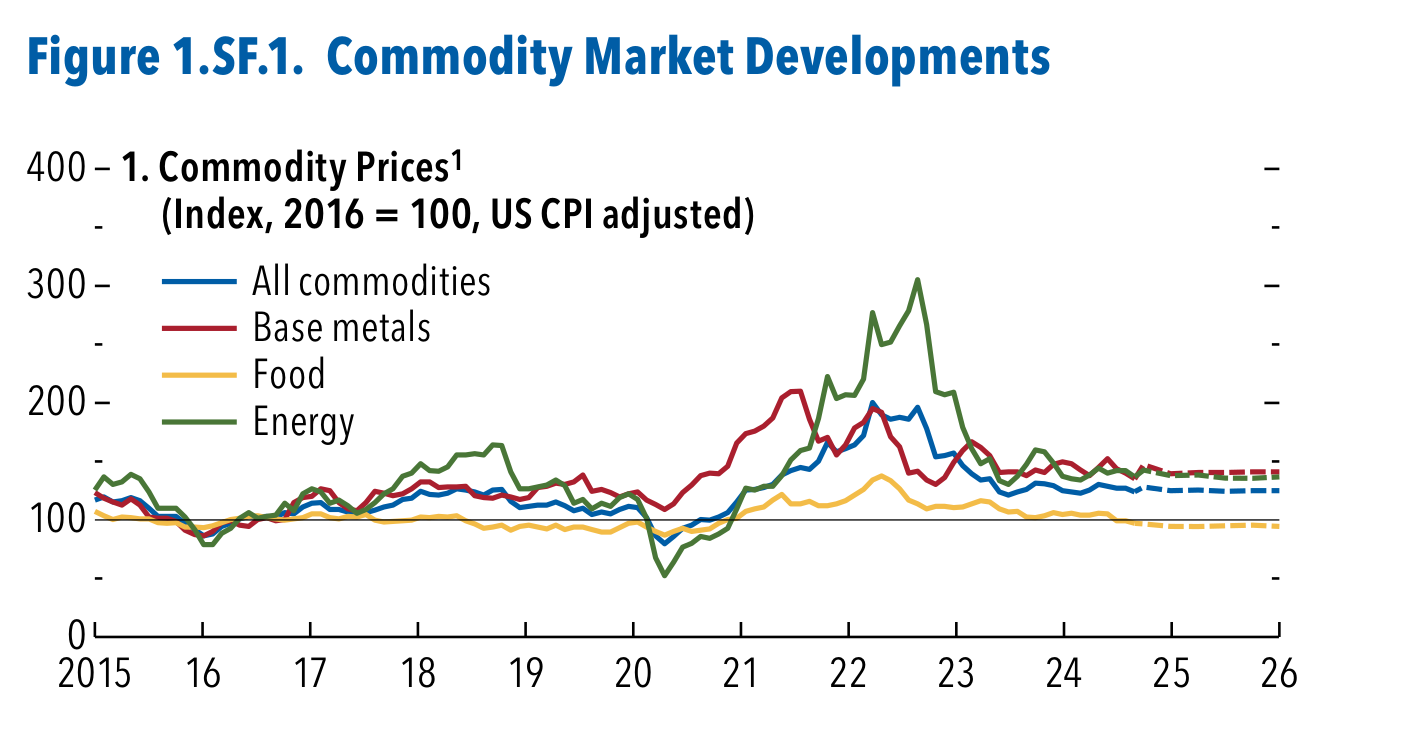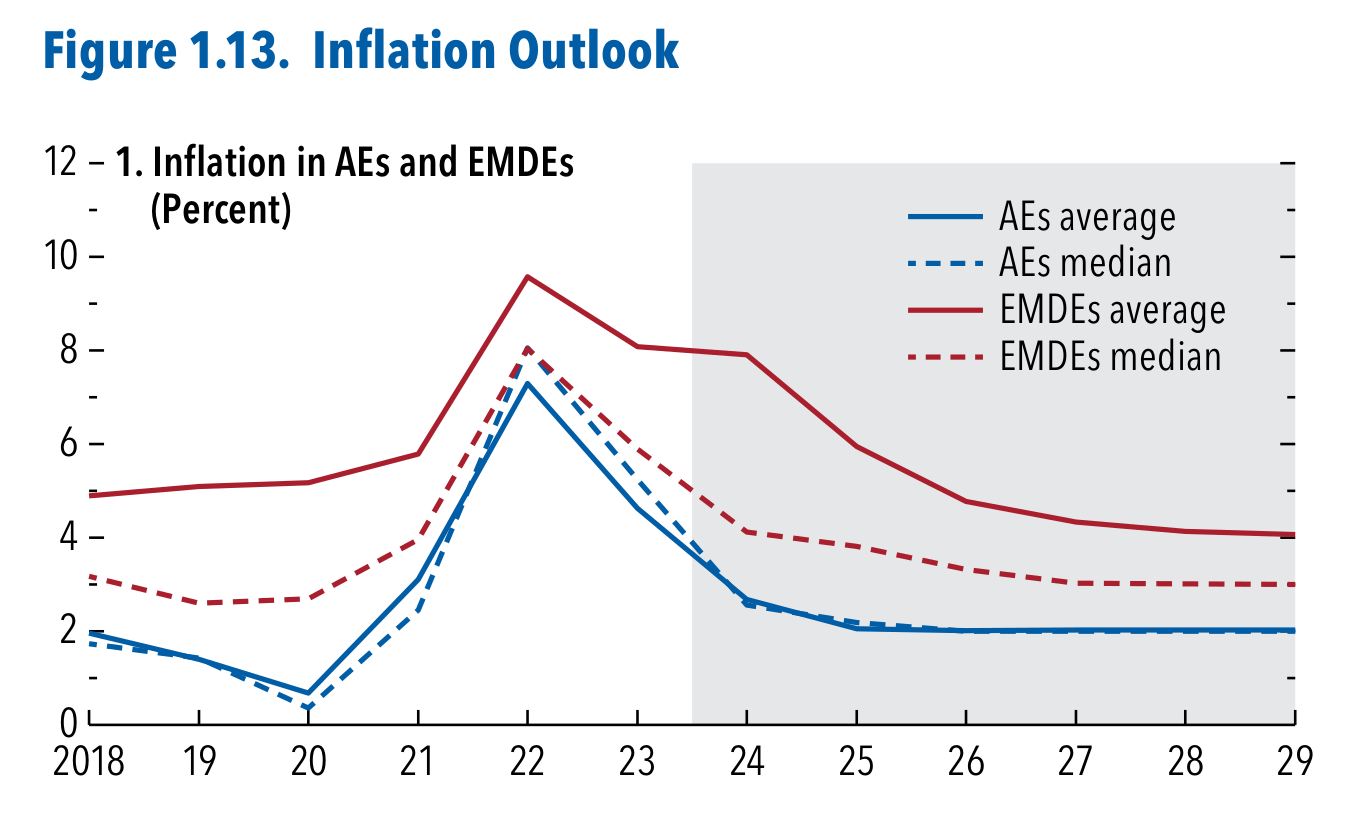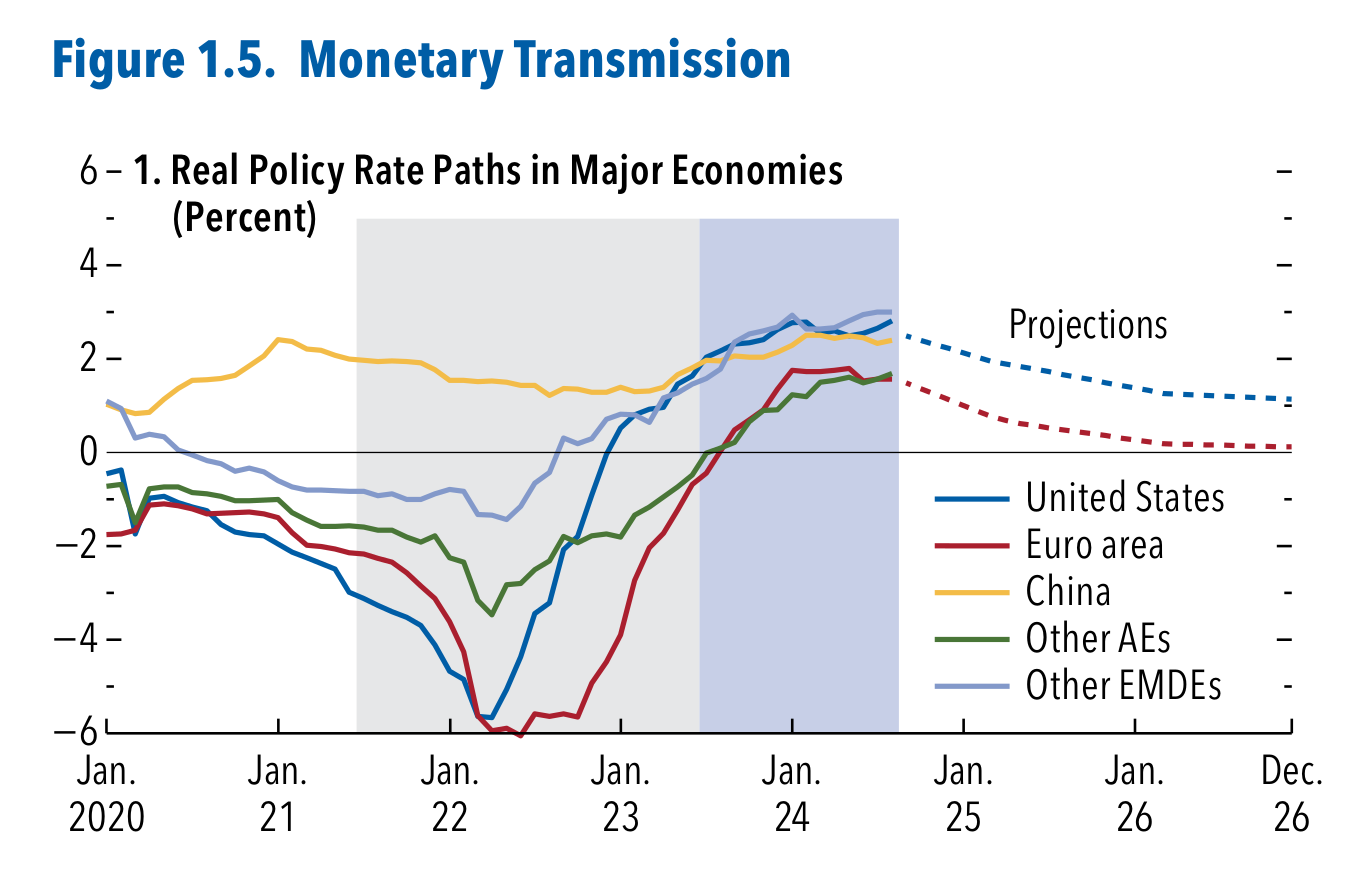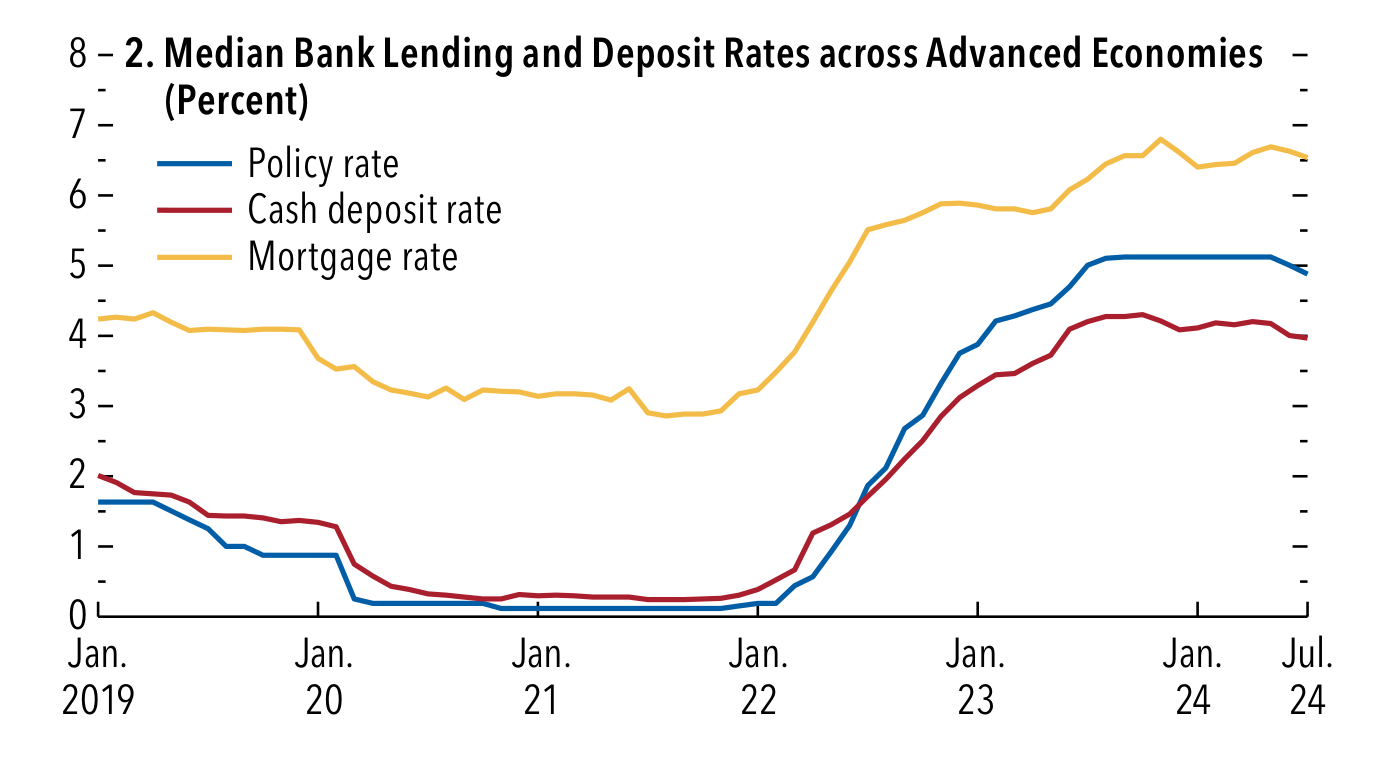Our goal with The Daily Brief is to simplify the biggest stories in the Indian markets and help you understand what they mean. We won’t just tell you what happened, but why and how too. We do this show in both formats: video and audio. This piece curates the stories that we talk about.
You can listen to the podcast on Spotify, Apple Podcasts, or wherever you get your podcasts and videos on YouTube. You can also watch The Daily Brief in Hindi.
Today on The Daily Brief:
- Zomato’s Big Shift: Blinkit and Beyond
- Something’s Brewing in the Silver Market
- The Global Economy in 2024 – Outlook & Risks
Zomato’s Big Shift: Blinkit and Beyond
Zomato has grown beyond being just a food delivery platform, emerging as a leader in quick commerce, thanks to the rapid rise of Blinkit. Analysts now believe that Blinkit could contribute more to Zomato’s overall value than its core food delivery business—a big shift from just a year ago. The competition is heating up, with Swiggy, Zomato’s main rival, gearing up for its IPO, while newcomers like Reliance and Flipkart are making bold moves into the quick commerce market.
In Q2 FY25, Zomato showed strong performance across its different business areas. The company’s Gross Order Value (GOV) jumped 55% year-over-year, reaching ₹17,670 crore, while consolidated revenue from operations rose to ₹4,799 crore, a 68.5% increase. On the profitability side, the company posted a consolidated net profit of ₹176 crore, a 389% increase from ₹36 crore in the same quarter last year.
Source: Zomato
Blinkit has been the standout performer, with its GOV soaring 122% year-over-year to over ₹6,100 crore.
Source: Zomato
The company has also expanded its reach significantly, adding 152 new dark stores and 7 warehouses this quarter, bringing its total store count to 791.
Source: Zomato
Blinkit is now significantly ahead of Swiggy’s Instamart, which has over 600 stores, and Zepto, with around 500 stores. This rapid expansion is reshaping the retail scene—even DMart, one of India’s biggest grocery chains, acknowledged the impact of online grocery services in its recent results: “We clearly see the impact of online grocery formats, including DMart Ready, in large metro DMart stores, which operate at a very high turnover per square foot of revenue.”
Blinkit’s performance metrics show promising signs. New stores are reaching profitability faster than before, generating ₹7 lakh in daily Gross Order Value (GOV) within their first quarter. The Average Order Value (AOV) has increased to ₹660 from ₹600 last quarter, thanks to a wider range of products, including electronics and beauty items, outperforming Swiggy’s Instamart, whose AOV is between ₹450-500.
The company has also reduced its reliance on the Delhi-NCR region, with its share of Blinkit’s business dropping from 47% to under 40%. Other metros are now showing similar or even higher AOVs than NCR. Seasonal factors like the monsoon affect operations, as Albinder Bansal noted, “During rains, capacities do get crunched a little bit, and we tend to see higher Average Order Values.”
Zomato’s core food delivery business remains strong, with its GOV growing 21% year-over-year to ₹9,700 crore. Recently, Zomato increased its platform fee from ₹7 to ₹10 per order, showcasing its growing ability to set prices. This adjustment has helped improve profit margins for food delivery to 7.6%, up from 7.3% in Q1, despite competition and seasonal variations.
To strengthen its position, Zomato has announced plans to raise over ₹8,000 crore through a Qualified Institutional Placement (QIP). This process allows listed companies to quickly raise capital by issuing shares to qualified institutional buyers like mutual funds, insurance companies, and foreign investors. CEO Deepinder Goyal emphasized that these funds won’t be used for discounts, saying: “While the business is now generating cash (unlike during our IPO), we believe it’s essential to strengthen our cash reserves given the competitive landscape and the much larger scale of our business today. Capital alone doesn’t give you the right to win—service quality is key.” Instead, the funds will focus on expanding operations and improving infrastructure.
Beyond quick commerce and food delivery, Zomato is broadening its business strategy. After acquiring Paytm Insider, the company is preparing to launch the District app, which will combine dining out and ticketing services into a single platform. Deepinder Goyal explains, “The going-out segment is growing fast, and we believe there’s a huge opportunity to bring food and entertainment under one roof.” Set to launch within four weeks, the District app aims to offer a seamless experience for customers while creating an additional revenue stream.
As Zomato continues to grow, two key questions come to mind: Can Zomato keep scaling Blinkit while maintaining its profit margins and staying ahead of the growing competition in quick commerce? And will the new District app be as big of a success as Blinkit?
Something’s brewing in the silver market
Silver recently crossed ₹1 lakh per kilogram for the first time, while gold hit record highs of ₹81,000 per 10 grams. Over the past year, silver prices have jumped 17.6%, outpacing gold’s 13.4% rise. But silver’s journey hasn’t been smooth; it traded sideways for a while before this big rally. So, what exactly happened, and why should you care? Let’s dive in.
Silver vs. Gold—different roles, different uses
First, let’s talk about the differences between silver and gold. Gold is the ultimate safe haven—central banks buy it, and investors turn to it during crises. Its primary role is to preserve wealth. Silver, on the other hand, is both a precious metal and an industrial one, making it more complex and interesting.
Silver is a great conductor of electricity, making it essential for industrial uses. Unlike gold, which is mainly used for investment and jewelry, more than half of the world’s silver goes into industrial applications. Think about the electronics in your home, solar panels, and electric vehicles—silver plays a key role in all these technologies.
But silver’s industrial role doesn’t make it immune to the same forces that affect other precious metals. It tends to follow gold when it comes to investor sentiment but with more ups and downs. When gold rallies, silver often follows, though it may take a bit longer.
Gold also benefits from central bank purchases, which help stabilize its demand. Silver doesn’t have that kind of institutional support—no central banks are buying silver. This makes gold more of a financial safety net, while silver’s price is shaped more by its industrial demand and shifts in investor sentiment.
Gold and silver also differ in terms of volatility. Gold is generally less volatile, with its price influenced by factors like inflation, geopolitical events, and central bank actions. Its stability comes from its larger market size and greater liquidity. Silver, however, is more volatile due to its smaller market and greater industrial demand. Its price can swing two to three times more than gold’s on any given day, making it more sensitive to changes in supply and demand. This higher volatility means silver can be riskier, but also potentially more rewarding when prices rise.
The gold-to-silver ratio is another key indicator of their relative value. Right now, the ratio is around 80, which means it takes 80 ounces of silver to buy one ounce of gold. A high ratio like this suggests that silver might be undervalued compared to gold. Recently, this elevated ratio reflects stronger demand for gold as a geopolitical hedge. However, if central banks start cutting rates and monetary policy shifts, the usual connection between gold and silver could come back into play, narrowing the ratio and giving silver a boost.
What’s driving silver’s recent rise?
So, what’s behind this surge in silver prices? One of the biggest factors is demand from the global shift toward cleaner energy.
Silver is in high demand for photovoltaic (PV) applications—basically, solar panels. Solar power has been booming, with installations exceeding expectations in 2023. The PV sector alone used about 161 million ounces of silver last year, and demand is expected to keep rising as newer, more efficient solar cells that require more silver become more common.
Source: Wisdomtree
Another key driver is the increasing use of electric vehicles and technologies like 5G and AI. These advancements require more electronics, which means more silver. Building the infrastructure for battery charging and upgrading the electrical grid also requires a lot of silver, and as these sectors grow, they’re pulling silver demand along with them.
On the supply side, keeping up has been tough. Last year, silver mine production was slightly down, at around 830.5 million ounces. Global silver production has faced challenges like strikes, lower ore quality, and mine closures. A significant factor in the decline was the suspension of operations at Peñasquito, one of Mexico’s largest silver mines.
Source: Silver Institute
The deficit story—supply and demand dynamics
Here’s where it gets interesting. We’re now in the third straight year of a silver supply deficit. In 2023, that deficit reached 194 million ounces, one of the largest ever recorded, even though overall demand dropped by about 7%. Industrial demand kept growing, but other sectors like jewelry, silverware, and coin investment saw declines due to high prices and changing consumer habits.
According to the Silver Institute, increased investor interest is partly due to economic uncertainties. As investors looked for ways to diversify during unpredictable economic times, silver became a preferred choice alongside gold. This shift hasn’t just pushed up silver prices; it has also made the deficit worse, as more silver is being locked away in investment products instead of being available for industrial use.
Why does this matter? Deficits eventually lead to tighter supplies, which help keep prices higher. Even though there’s still plenty of silver stored in vaults, these ongoing deficits are gradually eating into those reserves. Once stockpiles start to shrink, we could see a real squeeze in the market.
So, what are the big financial players saying? UBS notes that silver often lags behind gold but eventually catches up—especially when central banks start easing monetary policy. With the Federal Reserve expected to cut rates further, UBS believes this could set the stage for another rise in silver prices.
JP Morgan, however, takes a more cautious view. They point out that while industrial demand for silver is strong, there are risks from the broader economy, particularly a potential slowdown. If economic growth slows, demand for electronics and solar panels could decrease, which would put pressure on silver prices.
So, what can we expect moving forward? The general view is that silver will continue to benefit from strong industrial demand, especially in areas like renewable energy and electronics. But the path will be bumpy. With another significant market deficit expected in 2024, driven by ongoing industrial demand and a limited supply, silver’s fundamentals look strong.
One possible outcome is that if the transition to cleaner energy speeds up faster than expected, silver could see an even sharper increase in demand, driving prices higher. On the other hand, if global economic growth slows down or if new technologies reduce the need for silver in electronics and solar panels, the price rise might be more moderate.
There are still challenges on the horizon. High interest rates have made holding non-yielding assets like silver less appealing. But as monetary policy shifts toward looser conditions, investor interest in silver is likely to grow. And while silver is more volatile than gold—meaning it could see bigger price swings—it also has the potential for substantial gains when conditions are right.
In short, silver is set for an interesting ride. The trends of energy transition and electrification are real and here to stay. But with supply constraints in place, silver is becoming a particularly intriguing metal to watch right now.
The global economy in 2024 – Outlook & Risks
Today, we’re diving into the IMF’s global economic outlook for 2024—what’s changing, who’s gaining ground, who’s facing challenges, and most importantly, the risks that could shake everything up. Whether you’re an investor, a business owner, or just someone curious about where the world is headed, this one’s for you.
These observations summarize the latest “World Economic Outlook” issued by the IMF.
Let’s kick things off with the global outlook. Right now, the big picture shows stability, but not spectacular growth. The IMF expects the global economy to grow at 3.2% in 2024 and 2025—steady, but with some major differences depending on where you look.
Source: IMF
Moving on to India
India’s GDP is expected to grow by 6.8% in 2024, keeping it among the fastest-growing major economies. This growth is mainly driven by strong demand at home and big investments in infrastructure. Government programs, like the Production-Linked Incentive (PLI) scheme, have been key in attracting foreign investment and boosting manufacturing. Plus, the services sector—especially IT and financial services—continues to do well, supported by digital transformation at home and solid global demand.
However, there are some risks to watch out for. Financial challenges and slow export growth could hold back the overall outlook. Rising inflation, especially food prices, could hit household spending, potentially slowing down consumer activity. The rural economy, heavily reliant on agriculture, is also at risk due to unpredictable weather and higher farming costs. While the banking sector is strong, it could face pressure if inflation sticks around or if global financial conditions get tougher.
Regional Updates
- United States: The IMF has slightly improved its growth forecast for the U.S., thanks to strong consumer spending and a solid job market. But there are questions about how long this can last, especially with credit becoming harder to get and household debt rising. Higher long-term interest rates are making borrowing more expensive, which could slow down business investments and the housing market. The Federal Reserve faces a tricky balancing act between keeping inflation in check and supporting growth.
- Europe: Growth forecasts for Europe have been lowered as the region deals with high energy costs, weaker industrial activity, and a slowdown in exports. The energy crisis, driven by geopolitical tensions, continues to hurt the eurozone’s manufacturing sector. Key economies like Germany are facing challenges, especially in their manufacturing industries. While the services sector is holding up better, it can’t fully make up for the decline in manufacturing. On top of that, the European Central Bank’s tighter monetary policies are putting additional pressure on businesses.
- China: China’s growth is expected to slow down further due to problems in the property market, weaker consumer confidence, and the lingering effects of strict COVID-19 measures. The property sector, which is a big part of China’s economy, is struggling as major developers face financial trouble, leading to less construction and lower economic confidence. The government has rolled out targeted support, like more infrastructure spending and tax breaks, but it’s unclear how effective these will be given high debt levels and cautious consumer spending.
These different trends across major economies make the global outlook feel uncertain. The U.S. shows some resilience, Europe is facing tough structural challenges, and China is grappling with internal issues, raising the risk that growth rates could vary widely from one region to another.
The risks to this outlook are leaning toward the negative side:
- Regional Conflicts and Geopolitical Tensions: Escalating regional conflicts, like the tensions in the Middle East, could disrupt global supply chains, especially for energy and other key resources. The ongoing conflict in Ukraine continues to impact Europe, while tensions in the South China Sea could interfere with critical trade routes.
- Prolonged Tight Monetary Policies: Central banks in advanced economies have kept interest rates high to combat inflation. But if these policies continue for too long, they could slow down investment and consumer spending. The European Central Bank, for example, faces challenges as high rates make it tougher for businesses to borrow.
Source: IMF
- Slowdown in China: China’s economic slowdown, particularly in the property sector, is a major risk. High debt levels are hurting consumer confidence and spending, which could have ripple effects on the global economy.
- Rising Protectionism: Countries around the world are increasing trade barriers. The U.S., for instance, has put in place trade restrictions targeting key sectors like semiconductors, leading to retaliatory moves. This trend could break apart global trade networks, reduce efficiency, and slow down economic growth.
Source: IMF
- Commodity Price Volatility: The global economy is still sensitive to sudden changes in commodity prices. Energy prices remain unstable due to geopolitical issues, and disruptions in key areas like the Middle East could cause swings. Agricultural commodities are also facing challenges from climate-related issues, worsening food inflation in vulnerable regions.
Source: IMF
- Labor Market Disruptions: Labor markets are going through major changes. In advanced economies, worker shortages are pushing wages up, but productivity isn’t keeping pace, which could keep inflation high. In emerging markets, the informal work sector remains at risk, potentially impacting household income and spending.
These risks create uncertainties that could shape the economic outlook in unexpected ways, making it crucial for businesses and policymakers to stay alert.
Inflation path forward
The road ahead for inflation is still uncertain. The IMF expects inflation to gradually decrease, with advanced economies nearing their central bank targets faster than emerging markets. However, inflation in services remains stubborn, fueled by wage increases and supply issues. In emerging markets, inflation is a bigger challenge, worsened by weaker currencies, higher import costs, and supply bottlenecks. Rising food and energy prices continue to drive overall inflation, hitting low-income households the hardest.
Source: IMF
For central banks, this means they need to tread carefully. Some are starting to ease off from aggressive rate hikes, shifting to a more balanced stance. The challenge is to keep inflation in check without stifling growth. In many emerging markets, higher interest rates have slowed investment, raising concerns about prolonged stagnation if rates stay high. In advanced economies, rising wages without corresponding productivity gains could keep inflation pressures alive.
Source: IMF
Source: IMF
So, what’s next for the global economy? The IMF points out that while growth is expected to continue, it will likely be slow. Trade remains at risk from geopolitical tensions and protectionist policies that could further break apart global trade networks. The shift from goods to services spending is likely to continue, benefiting service sectors. But manufacturing, especially in advanced economies, is facing challenges that could disrupt global supply chains. Rising protectionism could lead to less efficient use of resources, putting more pressure on growth. And climate-related disruptions add yet another layer of risk, threatening infrastructure and supply chains, particularly in vulnerable regions.
To wrap it up, we’re looking at a mixed picture—steady but modest growth, inflation that’s easing but still stubborn in some areas, and plenty of uncertainty. The IMF’s message is clear: we need to adapt to increasing risks, while policy adjustments—whether fiscal or monetary—aim to bring stability. Policymakers will need to stay nimble, balancing short-term pressures with long-term goals. Meanwhile, businesses and consumers should prepare for a period of adjustment.
Tidbits
- Reliance Infrastructure plans to invest ₹10,000 crore over the next decade to build an integrated ammunition and arms manufacturing project in Maharashtra. Named Dhirubhai Ambani Defence City, the project will bolster India’s push for self-reliance in defense manufacturing.
- Air India has expanded its codeshare agreement with Singapore Airlines, adding 51 new destinations. This move enhances global connectivity and aligns with Air India’s strategy to strengthen its international presence ahead of the Vistara merger.
- Adani Green Energy reported a 39% YoY increase in net profit to ₹515 crore in Q2 FY25, driven by capacity expansions and operational efficiency. The company’s operational capacity grew 34% to 11.2 GW, boosting energy sales by 20%.
Thank you for reading. Do share this with your friends and make them as smart as you are ![]()
If you have any feedback, do let us know in the comments

